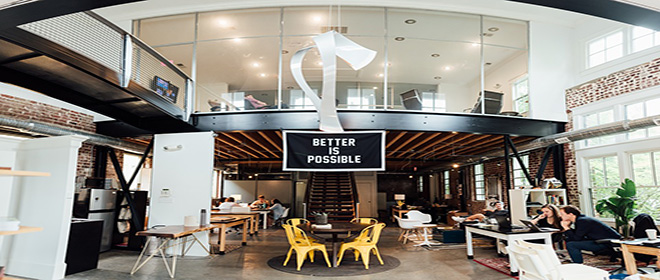
Creating a greener workspace is not a new concept. However, in recent years this trend has seen an explosion in offices of all sizes, all across the country. Many businesses have caught onto the trend out of concern for the environment, while others have started to work towards greener offices in order to save money. No matter what motivates your business, you can take stock in the fact that switching to a greener office has both environmental and financial benefits! Going green doesn’t have to involve costly remodeling, either; follow these six easy steps and you’ll reduce your business’s carbon footprint while saving hundreds of dollars each year!

1. Replace Disposable Cups
You may not think twice about reaching for that Styrofoam cup next to the coffee pot, but that cup will be around long after you toss it in the trash. A single Styrofoam cup can take up to 500 years to fully decompose! If there are 20 people in your office and you each use one cup every workday, you’re contributing 100 cups each week to your local landfill, where they’ll sit for hundreds of years to come. Plastic water bottles aren’t any better; on average, they can take up to 450 years to fully decompose.
Instead of buying new sleeves of disposable cups and stocking your office fridge with plastic bottles of water, opt for permanent cups and/or bottles. You can have your company’s logo printed onto ceramic coffee cups, travel mugs, or reusable water bottles and distribute them to your employees. Encourage each worker to keep a cup/bottle at their desk and use it every day – it’ll help cut down on environmental waste, reduce your annual office supply expenses, and create company loyalty while also advertising your business!
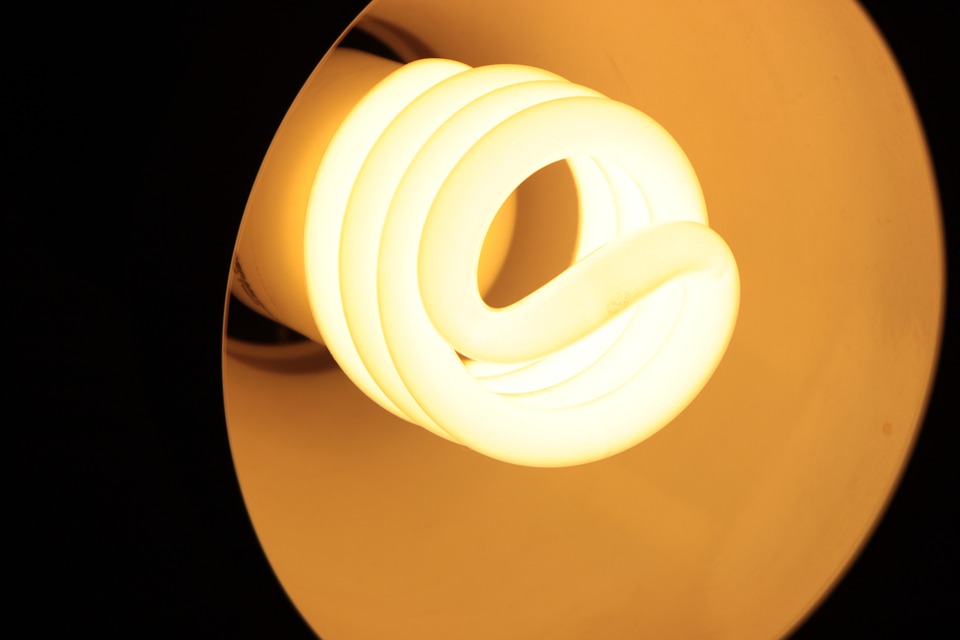
2. Use Energy-Efficient Lightbulbs
Switching to energy-efficient light bulbs is a no-brainer. Using a standard incandescent bulb costs more in the long run because they require more energy to light up a room and they do not last as long. By comparison, energy-efficient lightbulbs last up to 25x as long as an incandescent bulb, and they use up to 80% less energy!
Energy-efficient lightbulbs come in a variety of styles, including compact fluorescent lamp (CFL) bulbs and light-emitting diode (LED) bulbs. The U.S. Department of Energy estimates that switching just five light fixtures to energy-efficient bulbs can help you save $75/year. A small office with 20 light fixtures could stand to save approximately $300 annually!

3. Reduce Print Waste
Have you ever attended a meeting where everyone received printed handouts of the same material? How often have you referred back to those pages since that meeting? Many offices print out superfluous copies of documents and presentation materials, only for those printouts to be read once (or not at all) and tossed in the trash. The Environmental Protection Agency (EPA) reports that approximately 90% of all waste generated by office workers is paper-based, with the average employee creating up to two pounds of paperwork each day! Break that cycle by reducing your office’s print waste – and your overall paper use.
There are many ways to reduce your office’s dependence on paper. Some easy ways to start include:
- opting for digital communication and presentation methods (email, shared PDFs, PowerPoint slideshows, etc.) instead of using printed materials.
- printing in draft mode whenever possible.
- using programs like GreenPrint to monitor your office’s printer usage and reducing how much paper you and your coworkers go through each day.
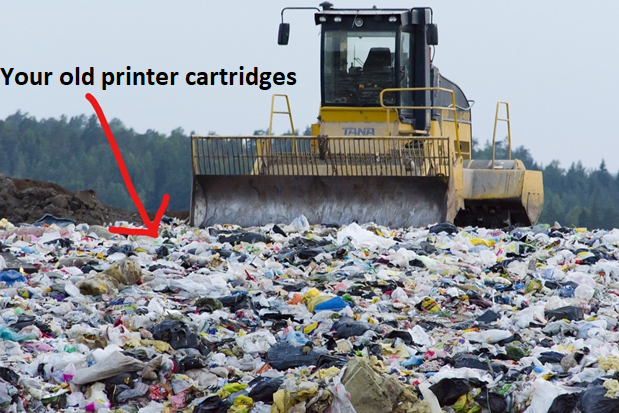
4. Use Remanufactured Printer Cartridges
Every office needs printer ink and toner to continue running day-to-day operations. What you may not realize is that those printer cartridges require a great deal of resources and energy to build. It takes up to three ounces of oil to produce one ink cartridge, and a single toner cartridge can require a whole gallon of oil! Across the United States, 70-80% of printer cartridges end up in landfills after a single use, and each printer cartridge can take up to 1,000 years to completely decompose! Buying brand-new OEM ink and toner can also be very expensive. Instead, switch to remanufactured ink and toner cartridges to cut costs and reduce waste.
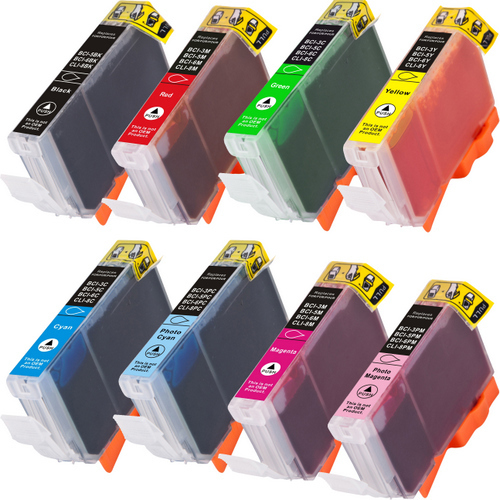
Remanufactured printer cartridges give you the same page yield and shelf life, along with comparable print results, for a fraction of the OEM retail price. According to Consumer Reports, the average annual cost of buying OEM printer ink for home use is between $180 and $230, with office use considerably higher and more expensive (especially for large workplaces). But when you switch to remanufactured ink, like these replacement HP ink cartridges, for example, you’ll save up to 72% without losing any of the quality you depend on!
- Remanufactured ink/toner cartridges are built using the plastic shells of recycled printer cartridges, with each unit undergoing extensive inspections and print tests to ensure a quality product.
- According to some estimates, 100,000 recycled printer cartridges will help reduce landfill waste by 80,000 pounds (40 tons) and lower oil consumption by approximately one million liters!
- Many people believe that using remanufactured ink will damage your printer, cause leaks, or produce inferior print work. However, as long as you buy from a reputable ink retailer, you’ll get a safe performance and flawless print results.
- Look for retailers that have a proven track record of excellence. For example, we here at 1ink.com have been in business since the year 2000! Our customers keep coming back for a reason: we offer low prices on high-quality ink.
- Make sure you only buy from retailers that offer a comprehensive money-back guarantee. Without a warranty, you may be out of luck. Our warranty protects your purchase for a full year!

5. Recycle Everything
Roughly half of all the garbage thrown away in the United States could be recycled. Once your office employs more responsible recycling practices, you could potentially cut your waste in half! Start with the basics: put recycling bins in your kitchen area for empty bottles and cans (but make sure your employees rinse them first to keep the area clean). You should also put out collection bins to recycle paper.
Greening your office doesn’t have to end with sorting out recyclables from your waste. Instead of buying paper made from brand-new tree pulp, opt for paper that’s made from 100% recycled materials. No new trees are cut down to produce this paper, and for every ton of recycled paper you buy you’ll reduce carbon dioxide emissions by over 2,000 pounds and save over 11,000 gallons of water!
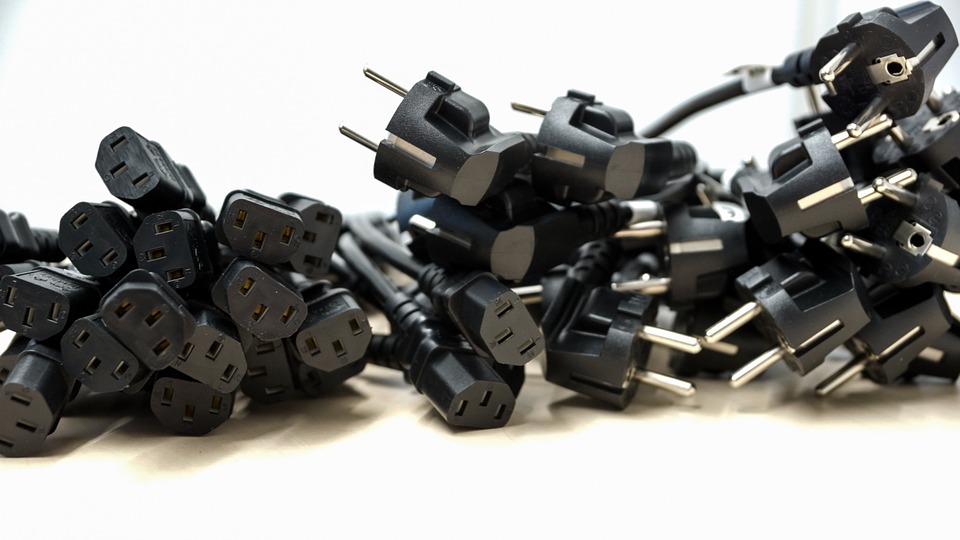
6. Unplug Electronics When Not In Use
You may not think twice about leaving your computer or printer turned on at the end of the day, but all those idle electronic devices are wasting energy and money when you’re not using them. A single laser printer, on average, wastes over $23 annually when left continuously plugged in. The average laptop wastes over $28 each year just from being left plugged in while not in use. When you consider how many printers and computers your office holds, you could be wasting hundreds of dollars each year just by keeping your idle electronics plugged in around the clock!
- Try to keep the electronic devices in your office unplugged when you’re not using them.
- Encourage your employees to power down their computers at the end of the day, and unplug the main outlets overnight and on weekends.
- Instead of letting computers go to screensaver mode, ask your workers to set their computers so that the device goes to sleep when it hasn’t been used after a certain span of time (say, 5-10 minutes).
- Promote additional ways of reducing energy consumption. For example, consider installing motion-activated light switches instead of keeping the lights on all the time. This may be particularly helpful in rooms that aren’t used consistently, like meeting rooms and supply closets.

As you can see, there are many ways you can reduce your office’s carbon footprint without making significant sacrifices. When you consider how much of a change one single office can have on the environment – and how much money that change can save for your business – there’s no reason not to switch to greener methods!
